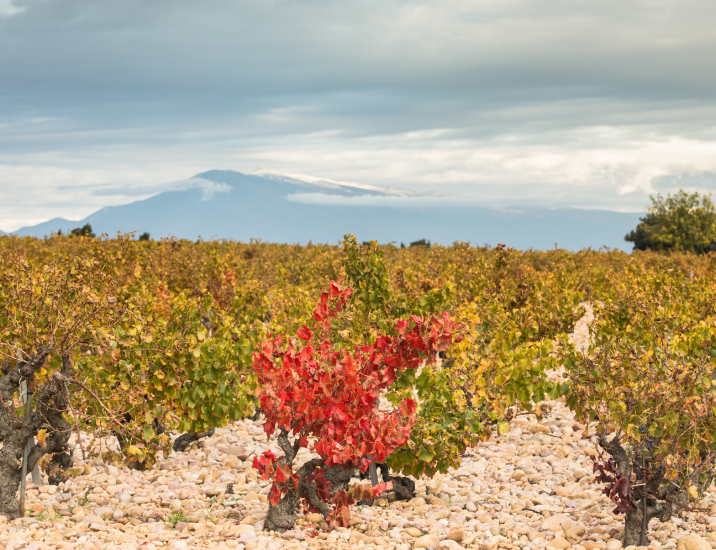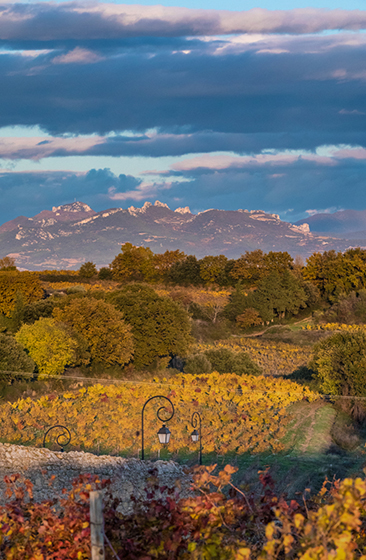Châteauneuf-du-Pape,
As the very first AOC in France, officially created in 1936 but with a history that dates back to the 14th century, Châteauneuf-du-Pape is one of the country’s most prestigious appellations. From Pope Clement V to Robert Parker, many have pledged their devotion to this exceptional terroir. It makes an extraordinary playing field for winemakers thanks to its mosaic of terroirs and varietals.

You only need to travel the winding roads between the vineyards to grasp the sheer diversity of the terroirs of Châteauneuf du Pape. From rolled pebbles and sand to safer and Urgonian limestone, these remarkably diverse soils are what shape the character of the finished wines.
I’m often asked ‘what is the best terroir in Châteauneuf du Pape?’. Whilst some are indeed iconic, it’s a difficult question to answer. The vintage, and in particular the climatic conditions, strongly influence the answer. In dry vintages, the clay marls on the plateau help to keep hydric stress at bay. In wetter vintages, it is the sandy terroirs that offer the best compromise.

What is certain is that the diversity of Châteauneuf du Pape’s terroirs contributes significantly to the complexity of the wines and the diversity of expressions that we find across the various wine domaines.
In terms of the creation of my wines, I am therefore able to play with this diversity and use it to my advantage in striking just the right balance in my blends.
‘Châteauneuf-du-Pape, the appellation of 13 varietals.’
Châteauneuf-du-Pape is known throughout the world for its thirteen varietals. It also owes its diversity to the incredible genetic legacy of the Châteauneuf wine region. The winemakers prioritise massal selection* in the vineyards and have built up an extraordinary genetic legacy over the centuries. To this day there are still century-old vine parcels, known as ‘collection vines’, composed of the various varietals.
*the winemaker selects his rootstocks by cutting a shoot from his finest vine stocks.
Whilst the history of the appellation is undoubtedly impressive, its rules and regulations, in particular pertaining to the use of varietals, make it possible for the winemakers to fully express their identity and their own personal style. It is therefore possible to produce both single varietal and multi-varietal cuvées, which can range from 100% Grenache to a blend of all 13 varietals, without forgetting of course the classic GSM blend (Grenache, Syrah and Mourvedre, in case you didn’t know…)
Ageing techniques have also evolved considerably over the years with small concrete vats and sometimes amphora replacing barrels and tuns. The appellation is naturally evolving towards an authentic expression of what are its most precious assets: its terroirs and its varietals.